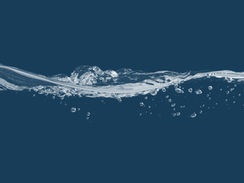
WATER & NATURE
Fresh Coast works with organizations to understand current water usage and identify areas for improvement. We provide guidance on water stewardship program development at an enterprise or site level, extending to the value chain to identify and mitigate water-related risks.
Services
Water Stewardship, Roadmaps and Implementation
Our water stewardship experts will help you design, develop and help implement best practice water stewardship strategies for your business, working with you to achieve water efficiency and conservation goals.
Water Gap Analysis & Risk Assessments
Assessing your companies regional physical, regulatory and reputational water risk using international datasets and GIS modelling.
Water Program Support: WAVE, AWS, CDP Water
Fresh Coast offers baseline analysis, strategies, implementation plans and stakeholder engagement to businesses seeking to start or optimize their WAVE, AWS, SBTN and CDP Water programs.
See Our Work In Action
Frequently asked questions
A water footprint is a measure of the total volume of freshwater used directly or indirectly by an individual, business, or product throughout its lifecycle. Conducting a water footprint involves determining how much water is used to manufacture a product, run a company, or support a single process. This exercise also evaluates the impact on a watershed and helps to understand usage patterns, aiding in minimizing water usage, reducing environmental impact, and promoting sustainable water management practices.
Implementing a Water Stewardship Roadmap can help your business optimize water use, manage costs, mitigate risks associated with water scarcity and quality, enhance your brand's reputation, and ensure compliance with regulatory requirements related to water management.
Several water risk assessment tools are available to help businesses understand and manage water-related risks, including the Aqueduct Water Risk Atlas, the World Resources Institute's Water Risk Filter, and the CDP Water Security Questionnaire. Additionally, The Water Council's WAVE program provides a framework for advancing water stewardship.
The complexity of water as a resource poses challenges. Unlike carbon, where simple metrics apply, a water program's effectiveness depends on factors like location and timing. Universal uptake of "Net Positive Water" in a basin is unlikely, leading to potential ineffectiveness and exposure to water risks for companies. WWF advises against using terms like "net" or "neutral" due to potential challenges and increased reputational risk.
Companies should prioritize engagement in collective water-related actions and governance, targeting shared basin objectives over proprietary responsibilities. By participating in collaborative efforts, they can mitigate basin risks and achieve measurable outcomes. WWF recommends a data-driven approach to evaluate water risk priorities, select contextually appropriate responses, and establish goals aligned with business strategy. Emphasizing outcome-level measures and transparent accounting of inputs and outcomes ensures accurate communication of companies' water stewardship endeavors while aligning with broader sustainability objectives.
"Net Positive Water" is a concept emerging in corporate sustainability, aiming to ensure a company's water-related activities have a positive impact on water resources. It's gaining traction as water risks worsen globally, prompting companies to assess and mitigate their impacts on water.
Water and climate change are intricately connected, with increasing global temperatures significantly impacting the water cycle, leading to more severe droughts and floods. These extreme events have profound implications, affecting our ability to grow food and access clean drinking water. Additionally, receding floodwaters carry contaminants from the land, such as fertilizers, contributing to increasingly frequent and severe algal blooms and pollution of essential water sources. Understanding this complex relationship is crucial for developing effective strategies to address both water scarcity and climate change impacts.
Water Gap Analysis is crucial for identifying vulnerabilities in your water management program, allowing you to proactively address risks, and align your practices with sustainable water use principles.
Regular Water Risk Assessments help businesses stay ahead of potential water-related challenges, adapt to changing conditions, and ensure their water management practices remain effective and aligned with best practices and regulatory requirements.






